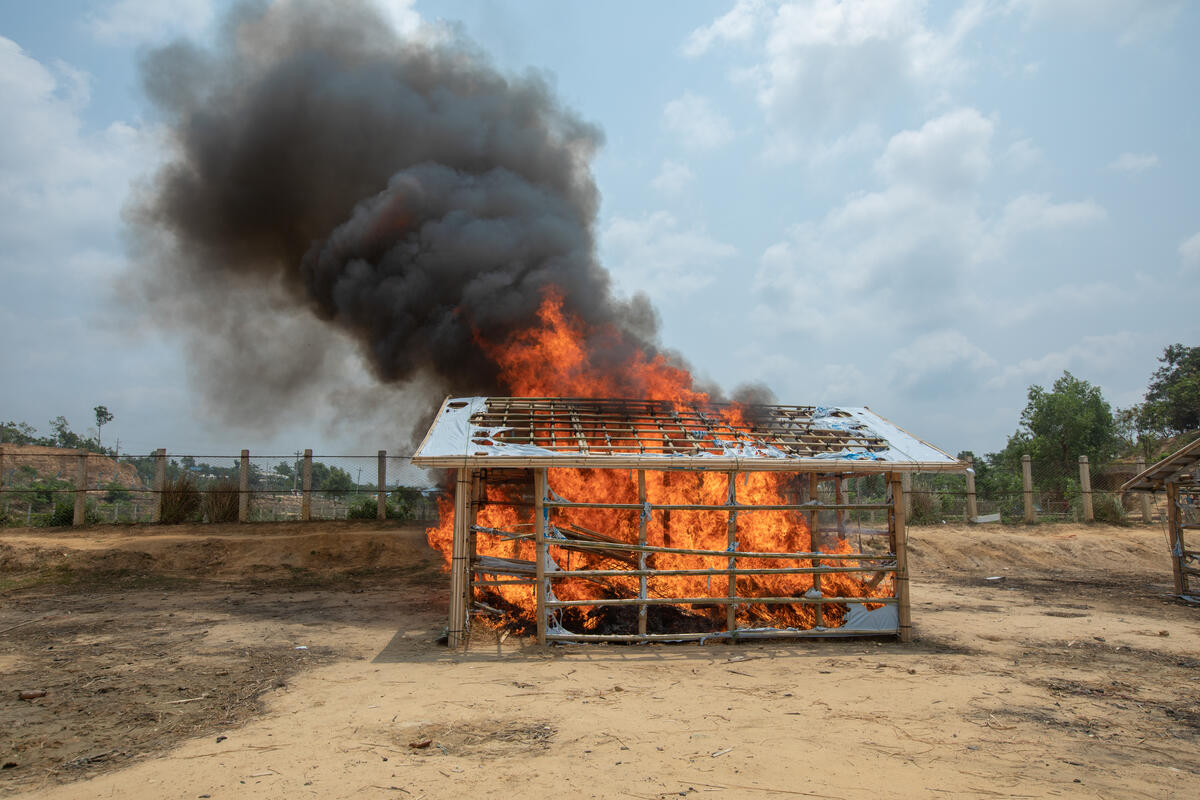Refugee and migrant flows through Libya on the rise – report
Refugee and migrant flows through Libya on the rise – report

TRIPOLI, Libya – Fleeing death threats in his native Rwanda, 54-year-old Mihigo and his family embarked on an epic journey that took them to Burkina Faso, Mauritania, Morocco and Niger, before eventually reaching Libya four years ago.
Working from time to time in construction jobs in the capital, Tripoli, he has struggled to find a regular work. In his search he has been robbed, assaulted and racially abused, while his wife and daughters suffered sexual abuse.
“I have faced all the problems: theft, bad treatment, discrimination, exploitation (and the) rape attempt of my wife and daughters,” he says.
The family’s desperate plight is unfortunately increasingly common among a growing number of refugees and migrants fleeing wars and hardship in Africa and reaching the North African country.
Among those arriving in Libya is Somali fisherman Hodan, 33, who slipped overland into the country’s southwest from Sudan with a smuggler, after an overland trek that took him through Ethiopia and Djibouti.
Once in the desert town of Rebyana, he was detained by unknown authorities for five days. In desperate need of both food and decent accommodation, he sees no alternative but to continue on his quest to reach Europe.
“I cannot go back home because of the war in Somalia and the absence of the government."
“I cannot go back home because of the war in Somalia and the absence of the government for over two decades,” he said in interview in the town.
Mihigo and Hodan are among scores of voices in a new study on mixed migration trends through Libya, published today by UNHCR, the UN Refugee Agency, which examines the rising flows of refugees and migrants passing through the North African country, and the multiple hazards they face.
Libya has for decades drawn people from neighbouring countries, as it offered the best employment opportunities and highest salaries in the region – although it has been increasingly roiled by instability and insecurity since the ouster of Muammur Gaddafi in 2011.
The study found that around half of those travelling to Libya do so believing they can find jobs there, but end up fleeing onwards to Europe to escape life-threatening dangers and difficult economic conditions plus widespread exploitation and abuse.
The foreign nationals going to Libya are part of mixed migration flows, meaning that people with different backgrounds and motivations travel together along the same routes. They include refugees, asylum seekers, economic migrants, unaccompanied minors, environmental migrants, victims of trafficking and stranded migrants.
In recent years, the number of people crossing the Mediterranean Sea from North Africa to southern Europe has increased. The indications are that this trend is likely to continue, along with the deadly risks.
This year alone, at least 2,030 people have died or gone missing on the voyage, with the greatest number of fatalities occurring along the so-called Central Mediterranean Route, through Libya.

To reach Libya, the report found most refugees and migrants arrive irregularly overland. Those setting off from East Africa travel through Sudan, while those from West and Central Africa travel through Niger. To a lesser extent, those from West Africa pass through Algeria.
In a measure of the danger facing migrants and refugees crossing the Sahara Desert, reports emerged last month of 44 desperate travellers, including women and children, who perished after the truck carrying them broke down in northern Niger.
To reach its findings, the new study drew on interviews with hundreds of refugees and migrants themselves, as well as government officials, NGO workers and smugglers in Chad, Niger, Algeria, Tunisia, Libya and Italy.
Of particular concern, it found that almost all refugees and migrants coming to Libya irregularly seek the help of smugglers or criminal networks, who now charge fees of around US$5,000, just to reach the country.
With higher fees and greater volume, the smuggling industry has grown increasingly professional, transnational in reach, and hazardous, with armed groups playing an increasingly dominant role.
“I have faced all the problems: theft, bad treatment, discrimination, exploitation.”
Countries of origin and profiles of refugees and migrants have also evolved, it found. Many of those on the move are young men. In particular, flows from West Africa have increased, involving individuals usually travelling “step-by-step,” in a series of journeys often organized by the travellers themselves.
As a consequence of this evolving dynamic, the report found that refugees and migrants making the journey are ever more vulnerable, while support services have decreased and the security situation has deteriorated.
Trafficking for sexual exploitation seems to be increasing, affecting Nigerian and Cameroonian women in particular. The number of unaccompanied and separated children travelling alone in Libya is rising, now representing some 14 per cent of total arrivals in Europe via the Central Mediterranean Route, mainly from Eritrea, The Gambia and Nigeria.
To mitigate the growing risks for refugees and migrants passing to and through Libya, recommendations in the report for UNHCR and other organizations include providing direct relief in the form of mobile joint interventions in key hubs in the South -- such as Bani Walid, Rebyana, Tazerbu, and Kufra.
Other recommendations include accompanying border monitoring and rescue operations to provide support to refugees and migrants stranded in the desert.









